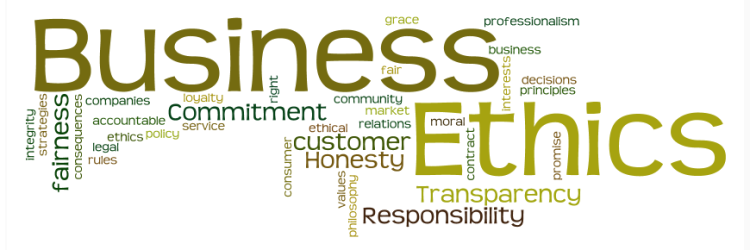208Views
Job opportunities in mutation
Dr Brijesh Sharma
“The illiterate of the 21st century will not be those who cannot read and write, but those who cannot learn, unlearn, and relearn”. The timeless thought by Alvin Toffler is very much relevant in the current global happenings. The continuous unlearning and unlearning is gaining acceptance but what to unlearn and learn is a big question to be addressed. The choice of what to learn lies at the intersection of passion towards a faculty of learning and the market forces which make the learning attractive. . Generally these two do not meet in one time zone for many, and the few who are lucky get these two things aligned. Many a times we think we are passionate or good at something but the reverse may be true. The truism of abundance transactional data is forcing the market to look for data crunchers. Data massaging, data torturing and other metaphors are in abundance and growing day by day. But the true crunchers are a rare breed. What is required of the data crunchers is a combination of mathematics and statistics knowledge, Computer skills, and also domain knowledge. We are entering an era which will be marked by accelerated change. Survival of the fittest has two cousins – fastest and finest. Step on the accelerator of learning and enter the new era of hyper connected people and things.
The fourth industrial revolution (4IR) is frequently surfacing in the intellectual discourse but the thought has not permeated and seeped in the masses. A perspective on 4IR would help. The first industrial revolution emerged somewhere and sometime in the 1780s with steam power and this made humans more productive. Then in the 1870s the second industrial revolution emerged with the development of mass production and electrical energy. It leapfrogged the progress of mankind. The third industrial revolution emerged with the development of IT and electronics, which enabled more efficient production. We are now in a new phase where the fusion of several technologies is not only automating production, but also knowledge. The second machine age of cyber physical system is powered by the enhanced storage and accelerated computing capacity which in turn can enable machine learning and artificial intelligence.
The permeation of 4IR has gain traction thanks to Covid 19. The pandemic and the fear of future virulent contagion are hastening the thought process of 4 IR in all human endeavors. Consistent with, and also complimenting the thought of 4IR, is the thought of Second machine age. The first machine age was about the automation of manual labor and physical strength. In the second machine age, the technological progress in digital hardware, software, and networks is about the automation of knowledge. The automation of mental work is very real and it is scarier for the knowledge worker.
The jobs of the future will have a technology component to it. Academia should move to technodemia. B School and T school should take inspiration from each other. The regular physical and mental job would be automated. The jobs will move to manage and monitor the automation. Current job profile will mutate and job seekers have to vaccinate themselves by having the skill pertaining to data management, data exploration by visualization, analytics and reporting. As per a study done by Mckinsey 50% of current jobs in agriculture, forestry, fishing, and hunting, representing 328.9 million employees, are potentially automatable. For manufacturing, 64% of current jobs are automatable, representing 237.4 million current employees. For retail trade, 54% of current jobs, representing some 187.4 million current employees are automatable. When considered by nation rather than industry, we see massive shifts for the world’s biggest economies. McKinsey anticipates that for China 395.3 million employees are in potentially automatable jobs, making up 51% of the labor force. In India, 235.1 million employees are working in automatable jobs. And in the United States 60.6 million, or 46% of the workforce, are currently in automatable jobs. Not all these jobs will go away, but all of them will be changed. As has been noted many times now, this is not just about unskilled labor. This is a story of all pattern based and routine work being replaced. Lawyers, radiologists, architects, and accountants marketing, finance, human resource management, operations will all see significant changes to how they work and in some areas we may witness much smaller demand for human labor. The well-paying jobs will involve creativity, data analytics, and cyber security, as there is currently a global dearth of talent in this area. Data analytics skill will involve Re designing transactional data touch points, integration of the data coming from various touch points, cleaning the data, transforming the data. These data prepossessing should velocity should exceed the velocity with which data is getting accumulated. The analytics which run on the data for exploration, and mining should match the speed. Again reporting the findings in a way required by decision makers is an entire world in itself, data artist is the name given to it. Companies using big data analytics are diverse. A excerpt from a book by Bernanrd Marr would be helpful.
In post pandemic period, the ways the companies work and operate will change. An individual who will succeed in post pandemic time is the one who can adapt to ever evolving workplaces and have the ability to continuously upgrade his/her skills. Some of the job skills that companies will look for are:
Walmart: How Big Data Is Used To Drive Supermarket Performance
Netflix: How Netflix Used Big Data To Give Us The Programmes We Want
Facebook: How Facebook Use Big Data To Understand Customers
LinkedIn: How Big Data Is Used To Fuel Social Media Success
Microsoft: Bringing Big Data To The Masses
GE: How Big Data Is Fuelling The Industrial Internet.
Ralph Lauren: Big Data In The Fashion Industry
Zynga: Big Data In The Gaming Industry
Amazon: How Predictive Analytics Are Used To Get Degree View Of Consumers
Apple: How Big Data Is At The Centre Of Their Business
Twitter: How Twitter And IBM Deliver Customer Insights From Big Data
Google: How Big Data Is At The Heart Of Google’s Business Model
Uber: How Big Data Is At The Centre Of Uber’s Transportation Business
Rolls-Royce: How Big Data Is Used To Drive Success In Manufacturing
DShell: How Big Oil Uses Big Data
CERN: Unravelling The Secrets Of The Universe With Big Data
Apixio: How Big Data Is Transforming Healthcare
Lotus F1 Team: How Big Data Is Essential To The Success Of Motorsport Teams
Pendleton & Son Butchers: Big Data For Small Business
US Olympic Women’s Cycling Team: How Big Data Analytics Is Used To Optimize Athletes’ Performance
ZSL: Big Data In The Zoo And To Protect Animals
John Deere: How Big Data Can Be Applied On Farms
Royal Bank of Scotland: Using Big Data To Make Customer Service More Personal
Acxiom: Fuelling Marketing With Big Data
TUS Immigration And Customs: How Big Data Is Used To Keep Passengers Safe And Prevent Terrorism
Nest: Bringing The Internet of Things Into The Home
Etsy: How Big Data Is Used In A Crafty Way
Narrative Science: How Big Data Is Used To Tell Stories
BBC: How Big Data Is Used In The Media
Milton Keynes: How Big Data Is Used To Create Smarter Cities
Palantir: How Big Data Is Used To Help The CIA And To Detect Bombs In Afghanistan
Airbnb: How Big Data Is Used To Disrupt The Hospitality Industry
Sprint: Profiling Audiences Using Mobile Network Data
Dickey’s Barbecue Pit: How Big Data Is Used To Gain Performance Insights Into One Of America’s Most Successful Restaurant Chains
Caesars: Big Data At The Casino
Fitbit: Big Data In The Personal Fitness Arena
Autodesk: How Big Data Is Transforming The Software Industry
Experian: Using Big Data To Make Lending Decisions And To Crack Down On Identity Fraud
Transport for London: How Big Data Is Used To Improve And Manage Public Transport In London
The US Government: Using Big Data To Run A Country
IBM Watson: Teaching Computers To Understand And Learn
Terra Seismic: Using Big Data To Predict Earthquakes
Electronic Arts: Big Data In Video Gaming
Kaggle: Crowdsourcing Your Data Scientist
The skills needed to take full advantage of the automation economy are different from those that have been emphasized uptill now – it will have a major component of technology blended with complex problem solving, critical thinking, creativity, people management, and emotional intelligence..
For further queries get in touch with us.


